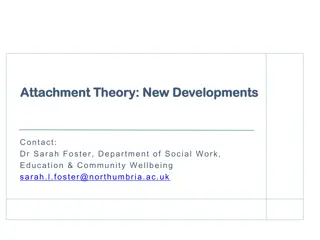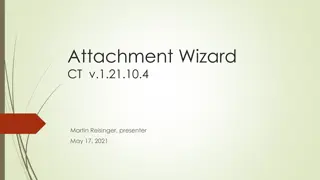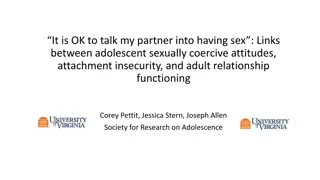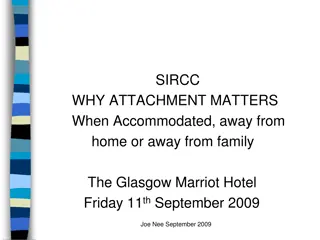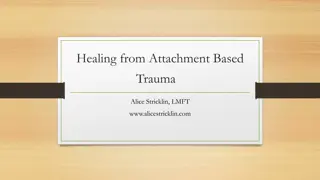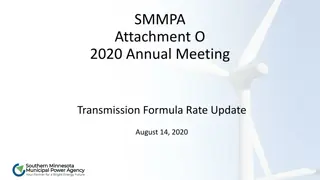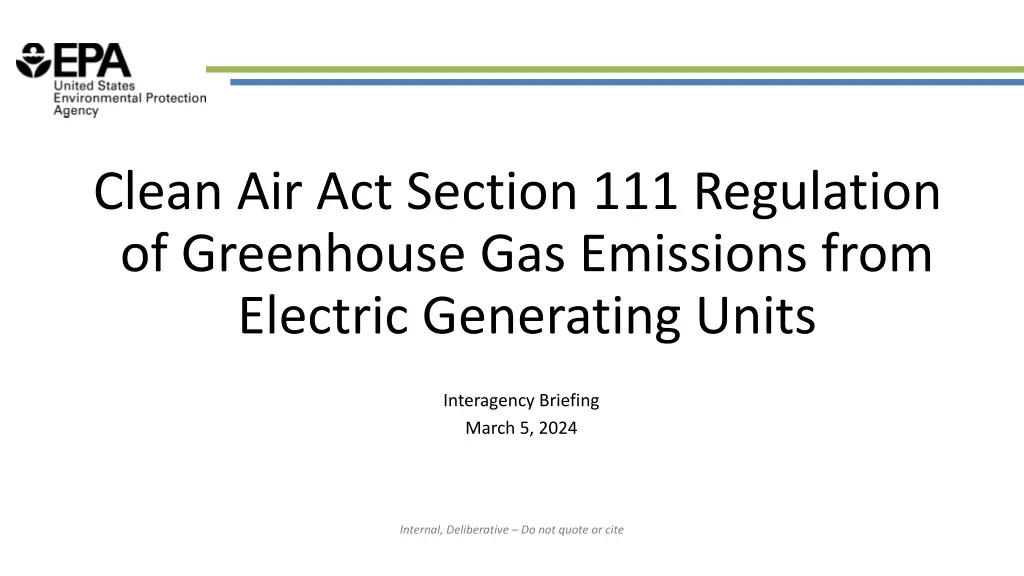
Regulation of Greenhouse Gas Emissions: Key Changes and Benefits
Explore the EPA's regulation under the Clean Air Act Section 111, detailing emission reductions, key changes from the proposal, and ongoing evaluations. Discover the cumulative CO2 emission reductions, SO2 and NOX emission decreases, and potential adjustments to deadlines and thresholds for CCS installation. Learn about public comments, stakeholder engagement, and the decision-making process leading to revised regulations.
Download Presentation

Please find below an Image/Link to download the presentation.
The content on the website is provided AS IS for your information and personal use only. It may not be sold, licensed, or shared on other websites without obtaining consent from the author. If you encounter any issues during the download, it is possible that the publisher has removed the file from their server.
You are allowed to download the files provided on this website for personal or commercial use, subject to the condition that they are used lawfully. All files are the property of their respective owners.
The content on the website is provided AS IS for your information and personal use only. It may not be sold, licensed, or shared on other websites without obtaining consent from the author.
E N D
Presentation Transcript
Clean Air Act Section 111 Regulation of Greenhouse Gas Emissions from Electric Generating Units Interagency Briefing March 5, 2024 Internal, Deliberative Do not quote or cite
Emission Reductions and Benefits Emission Reductions Cumulative CO2emissions between 2024 and 2047 are 1.36 billion metric tons lower than without the final rules (total remaining emissions after implementation are also about 300 million tons lower than at proposal) SO2 emissions are 893 thousand tons lower NOX emissions are 557 thousand tons lower Co-pollutant benefits are widespread, but in some areas and in some years, there are emission increases compared to the non-policy case Increases are largely driven by coal-fired units that install CCS operating more than they otherwise would because of IRA tax incentives In most cases even in those places, emissions are lower than today 2 Internal, Deliberative Do not quote or cite
EPA is still evaluating the following options: EPA is considering moving the deadline for which CCS must be installed on a long-term coal-fired unit forward from 2033 to an earlier year EPA is considering moving the deadline for which CCS must be installed on a new baseload natural gas-fired unit forward from 2035 to an earlier year EPA is considering lowering the capacity threshold for baseload NGCC units which must install CCS to a capacity factor lower than 50% 3 Internal, Deliberative Do not quote or cite
Key Changes from Proposal EPA received over 1.3 million public comments, conducted a small business review panel, issued a supplemental proposal on small business concerns and grid reliability issues, and conducted extensive stakeholder engagement that resulted in several key changes from the proposed rule: Reduction in number of subcategories for coal-fired steam generating units Extension of compliance date for CCS for coal-fired steam generating units Removal of low-GHG hydrogen co-firing as a BSER pathway Decision to not finalize requirements for existing fossil fuel-fired stationary combustion turbines Addition of short- and long-term reliability mechanisms 4 Internal, Deliberative Do not quote or cite
Regulatory History NSPS; CAA 111(b) In 2015, the EPA established greenhouse gas (GHG) standards for fossil fuel-fired steam generating units and fossil fuel-fired stationary combustion turbines In 2018, the EPA proposed to revise the NSPS for fossil fuel-fired steam generating units but never finalized the proposal Emission Guidelines; CAA 111(d) In 2015, the EPA finalized the Clean Power Plan (CPP) to address GHGs from existing electric generating units (EGUs) In 2019, the EPA repealed and replaced the CPP with the ACE rule In 2021, the D.C. Circuit Court vacated the ACE rule, which included the CPP repeal In 2022, the Supreme Court reversed the vacatur of the ACE rule and upheld the CPP Repeal 5 Internal, Deliberative Do not quote or cite
Repeal of the Affordable Clean Energy (ACE) Rule EPA is repealing the ACE rule on three grounds: ACE rule relied on Heat Rate Improvements (HRI), but they are not BSER because they would provide negligible CO2 emission reductions overall and could lead to increases in emissions from some sources due to the rebound effect CCS and co-firing natural gas are BSER because they are more impactful and are now cost-reasonable for certain sources ACE rule did not provide the states with adequate guidance as to the level of emission reduction that their standards of performance must achieve 6 Internal, Deliberative Do not quote or cite
NSPS Stationary Combustion Turbines Key changes Moved from 3 load-based subcategories to 4 load-based subcategories o Thresholds based on fixed capacity factors eliminated thresholds based on design efficiencies Removed low-GHG hydrogen co-firing as a BSER component o Primary impact no longer a second phase BSER component for intermediate load turbines o Hydrogen co-firing is an allowable compliance option 4 Subcategories Low load combustion turbines up to 20% capacity factor, burn lower emitting fuels Variable load combustion turbines up to 35% capacity factor, emission rate of 1,170 lb CO2/MWh-gross Intermediate load combined cycle turbines up to 50% capacity factor, emission rate of 1,070 lb CO2/MWh-gross Base load turbines above a 50% capacity factor o Phase 1 Emission rate of 800 lb CO2/MWh-gross o Phase 2 90% CCS 7 Internal, Deliberative Do not quote or cite
Emission Guidelines Existing Steam EGUs Applicability follows from NSPS, includes contiguous U.S., includes exemption for sources ceasing operation prior to January 1, 2033. Coal-fired steam EGUs: Medium-term EGUs o Units that have a binding commitment to cease operations prior to January 1, 2040; o BSER: natural gas co-firing 40% (16% reduction in emission rate); o Compliance date: January 1, 2030. Long-term EGUs o Units that are not medium-term EGUs; o BSER: CCS with 90% capture (88% reduction in emission rate); o Compliance date: January 1, 2033. 8 Internal, Deliberative Do not quote or cite
Emission Guidelines Existing Steam EGUs Natural gas- and oil-fired steam EGUs: Low load: < 8% annual capacity factor o BSER: Uniform fuels o Presumptive standard: Natural gas 130 lb CO2/MMBtu, Oil 170 lb CO2/MMBtu Intermediate load: 8-to-45% annual capacity factor o BSER: Routine O&M o Presumptive standard: 1,600 lb CO2/MWh-gross Base load: 45% annual capacity factor o BSER: Routine O&M o Presumptive standard: 1,400 lb CO2/MWh-gross 9 Internal, Deliberative Do not quote or cite
State Plans for Final Emission Guidelines Establishing Standards of Performance Providing a presumptively approvable methodology or standard (where applicable); states would apply EPA s degree of emission limitation to a baseline emission rate for an affected EGU o Baseline: lb CO2/MWh-gross from any continuous 8-quarter period within the 5-year period immediately prior to the date the final rule is published in the Federal Register Finalizing increments of progress for medium-term and long-term coal-fired subcategories Finalizing requirements to report milestones related to ceasing operations for units with a federally enforceable commitment to cease operations Allowing state plans to include a compliance date extension mechanism of no longer than one year for units installing a control technology that encounter a delay entirely outside of the operator's control (e.g., permitting- or construction-related delay) 10 Internal, Deliberative Do not quote or cite
State Plans for Final Emission Guidelines (contd) Remaining Useful Life and Other Factors (RULOF) Relying on subpart Ba, including threshold for invocation of RULOF (fundamental difference from EPA s determination) and process for determining less stringent standard or longer compliance schedule RULOF can be used to particularize compliance obligations for unique circumstances that are known at the time of state plan submission or that arise after plan submission/approval Compliance Flexibilities States may use rate-based trading and averaging for certain subcategories in their plans States may use mass-based trading and unit-specific mass compliance for certain subcategories with the inclusion of a backstop emission rate in their plans Finalizing a state plan submission deadline of 24 months 11 Internal, Deliberative Do not quote or cite
Environmental Justice EPA engaged on multiple occasions with environmental justice organizations and representatives of communities that are affected by fossil fuel-fired EGUs, and took their feedback into account in developing the final rule Two informational webinars specifically targeted towards Tribal Environmental Professionals, Tribal Nations, and communities with environmental justice concerns Three days of public hearings We carefully considered the concerns raised by several environmental justice organizations and community representatives regarding CCS While the final rule will result in large reductions in emissions of both GHGs and other air pollutants that will have significant positive benefits, there is the potential for localized increases in emissions However, there are protections in place that can reduce these risks The meaningful engagement requirements ensure that all interested stakeholders will have an opportunity to have their concerns heard in the state planning process 12 Internal, Deliberative Do not quote or cite
Reliability EPA conducted over 25 conversations with balancing authorities, reliability coordinators, RTO/ISOs, FERC, NERC and DOE to ensure a granular understanding of reliability concerns As part of the Small Business supplemental, EPA opened the comment period to all commenters for input on reliability-related mechanisms Adjustments to compliance timeframes, compliance flexibilities, subcategory structures and the universe of affected sources alleviate many of the reliability concerns that were raised Two optional reliability-related mechanisms are available for inclusion in State Plans: Short-term Reliability Mechanism for discrete grid emergencies o Existing units responding to NERC Energy Emergency Alerts may utilize alternative standards for those documented hours. For new units, data will not be used for those documented hours to determined applicability or compliance. Reliability Assurance Mechanism for retiring unit needed beyond its retirement date to address a reliability concern when there is insufficient time for a state plan revision o Appropriate documentation is required (substantiate that NERC reliability metrics would be impaired) o Applications for extensions exceeding 6-months will require review by FERC (under development) o Units may use the mechanism for an extension of up to 1-year, but no longer than substantiated 13 Internal, Deliberative Do not quote or cite
Summary of Cost, Environmental, and Economic Impacts ($Billion) Projected to result in national emission reductions of CO2, SO2, NOX, and direct PM2.5 PV and EAV Analysis for 2024-2047 (2019$), using 2%, 3%, and 7% discount rates The EPA has concluded the final rules will have no significant economic impact on a substantial number of small entities (no SISNOSE) 2% Discount Rate 3% Discount Rate 7% Discount Rate Climate Benefits $270 $270 $270 Health Benefits $120 $110 $60 Present Value Compliance Costs $19 $16 $8 Net Benefits $370 $360 $320 Climate Benefits $14 $14 $14 Health Benefits $6.5 $6.2 $5.2 Equivalent Annualized Value Compliance Costs $0.99 $0.93 $0.68 Net Benefits $20 $19 $19 Climate benefits are discounted at 2% in all cases 14 Internal, Deliberative Do not quote or cite


